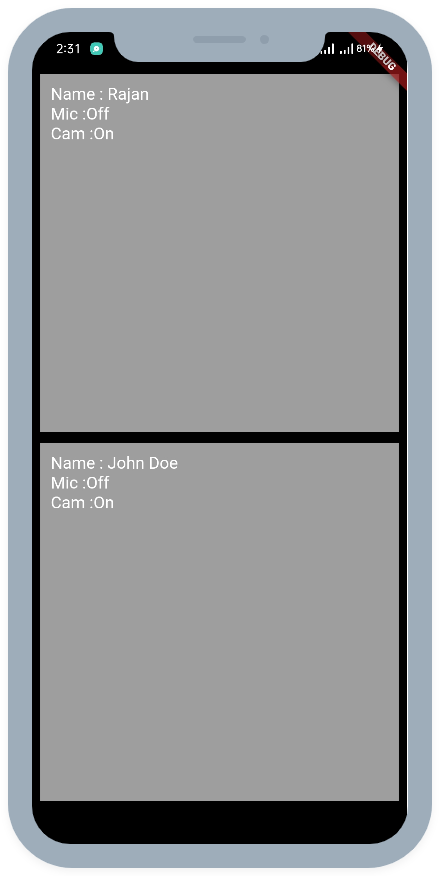Rendering Host and Audience Views - React Native
In a live stream setup, only hosts (participants in SEND_AND_RECV mode) can broadcast their audio and video. Audience members (in RECV_ONLY mode) are passive viewers who do not share their audio/video.
To ensure optimal performance and a clean user experience, your app should:
- Render video elements only for hosts (i.e., participants in
SEND_AND_RECVmode). - Display the total audience count to give context on viewership without rendering individual audience tiles.
Filtering and Rendering Hosts
The steps involved in rendering the video of hosts are as follows.
1. Filtering Hosts and Checking their Mic/Webcam Status
In a live stream, only participants in SEND_AND_RECV mode (i.e., hosts) actively share their audio and video. To render their streams, begin by accessing all participants using the useMeeting hook. Then, filter out only those in SEND_AND_RECV mode.
For each of these participants, use the useParticipant hook, which provides real-time information like displayName, micOn, and webcamOn. Display their name along with the current status of their microphone and webcam. If the webcam is off, show a simple placeholder with their name. If it's on, render their video feed. This ensures only hosts are visible to the audience, keeping the experience clean and intentional.
const LiveStreamView = () => {
const { participants } = useMeeting();
// Filter hosts only
const hostParticipants = [...participants.values()].filter(
(participant) => participant.mode === "SEND_AND_RECV"
);
return (
<View
style={{
flex: 1,
flexDirection: 'row',
flexWrap: 'wrap',
gap: 12,
}}
>
{hostParticipants.map((participant) => (
<ParticipantView key={participant.id} participantId={participant.id} />
))}
</View>
);
};
const ParticipantView = ({ participantId }) => {
const { displayName, micOn, webcamOn, webcamStream } =
useParticipant(participantId);
return (
<View
style={{
height: 250,
backgroundColor: "#404B53",
marginVertical: 8,
}}
>
<Text>{displayName}</Text>
<Text>
Webcam: {webcamOn ? "On" : "Off"} | Mic: {micOn ? "On" : "Off"}
</Text>
</View>
);
};

2. Rendering Video Streams of Hosts
Once you've filtered for participants in SEND_AND_RECV mode (i.e., hosts), you can use the useParticipant hook to access their real-time data, including their webcamStream, webcamOn, and whether they are the local participant.
You can also apply styling to mirror the video for the local participant.
import { useEffect, useRef } from "react";
import { View, Text } from "react-native";
import { useParticipant } from "@videosdk.live/react-native-sdk";
import { RTCView } from "@videosdk.live/react-native-sdk";
const ParticipantView = ({ participantId }) => {
//Getting the webcamStream property
const { webcamOn, displayName, micOn, webcamStream, isLocal } =
useParticipant(participantId);
return (
<View
style={{
height: 250,
backgroundColor: "#404B53",
marginVertical: 8,
padding: 8,
}}
>
<Text style={{ color: "white" }}>{displayName}</Text>
<Text style={{ color: "white" }}>
Webcam:{webcamOn ? "On" : "Off"} Mic: {micOn ? "On" : "Off"}
</Text>
{webcamOn && webcamStream ? (
<RTCView
streamURL={new MediaStream([webcamStream.track]).toURL()}
objectFit={"cover"}
mirror={isLocal ? true : false} //Mirror view for local participant
style={{
height: 200,
}}
/>
) : null}
</View>
);
};
Here, you don't need to render audio separately because RTCView is a component that handles audio stream automatically.

API Reference
The API references for all the methods and events utilized in this guide are provided below.
Got a Question? Ask us on discord

